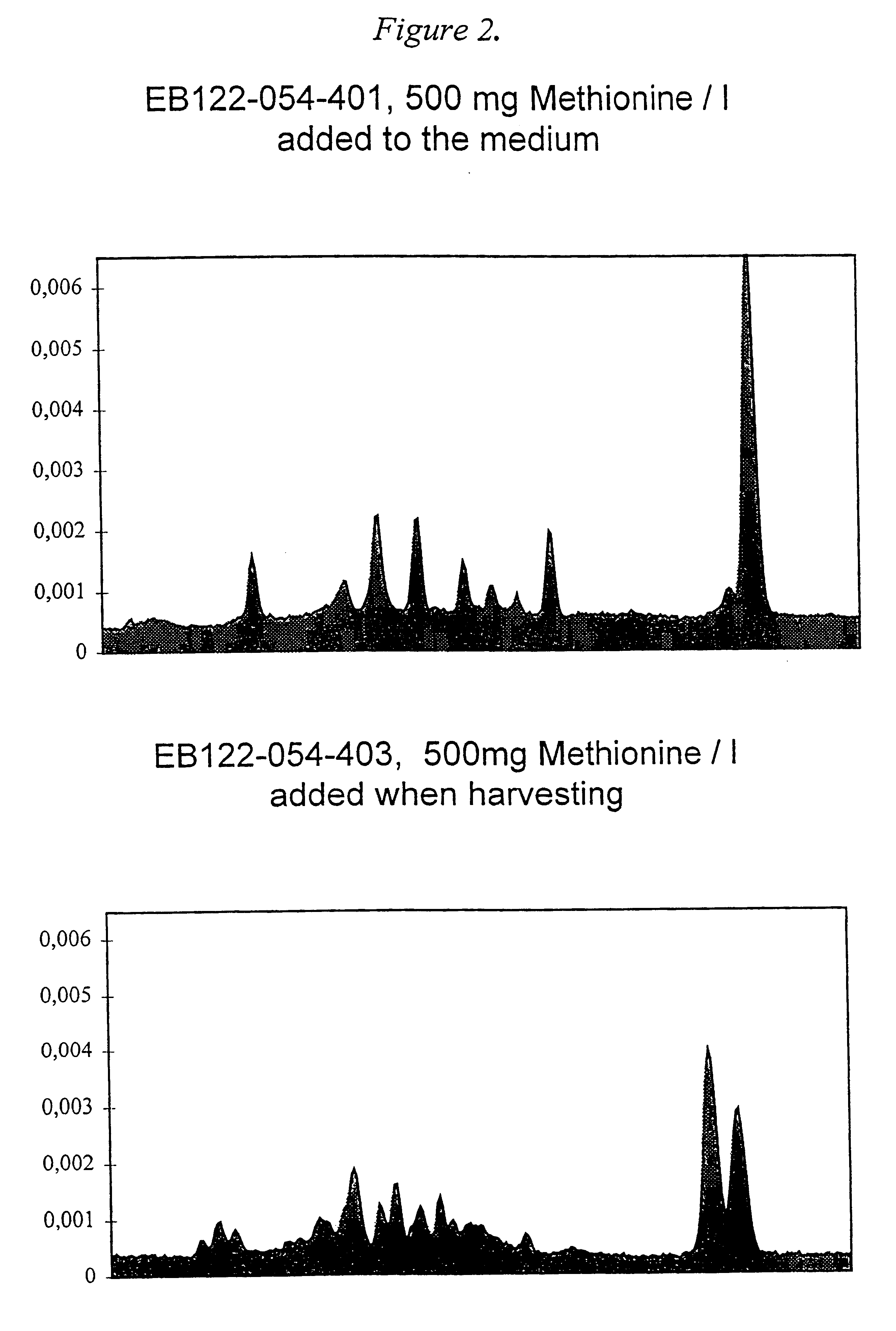Methionine containing animal cell culture medium and its use
a technology of methionine and animal cell culture, which is applied in the field of methionine containing animal cell culture medium and its use, can solve the problems of reducing the effect and lowering the yield of interferon
- Summary
- Abstract
- Description
- Claims
- Application Information
AI Technical Summary
Benefits of technology
Problems solved by technology
Method used
Image
Examples
example 1
Comparative small scale experiments were performed in small flasks (volume 100 ml)with the following media (40 ml ): EMEM (Eagle's minimal essential medium ) supplied by BioNative AB, Umea, Sweden, EMEM supplied by GIBCO and the inventive medium without L-methionine (BNL). The compositions used are presented in Table 1.
Table 1 shows the composition of the inventive medium without L-methionine (BNL) in comparison with two common, more complex commercially available media. When used for the production of natural interferon alpha the media are also supplemented with agamma-plasma (Cantell, 1978) (final concentration about 4%), neomycin sulphate solution 10% (0.25 ml / l) and priming (interferon-alpha added to a final concentration of 100 IU / ml). The interferon alpha yields obtained with these media are shown in Table 2.
Human leukocytes were obtained from buffy coats from different blood centres. The leukocytes were purified in several steps according to Cantell (1981) before incubated in...
example 2
Comparative experiments were also performed in small flasks with other media, which are similar to the BNL medium). The compositions used and yields are presented in Table 3. The leukocytes used in Example 2 were prepared in the same way as in Example 1
Table 3 shows the interferon-alpha yields obtained with the inventive medium without L-methionine (BNL) in comparison with more complex, commercially available medium (EMEM) and three other simplified media similar to the BNL-medium. One is according to Cantell (1978) (named CM), another is a variant thereof (named CMV) and the third is PBS according to Dulbecco.
example 3
Tests with different amounts of L-methionine in small scale. Table 4 shows the results from tests of different amounts of L-methionine in BNLM medium. The leukocytes used in Example 3 were prepared in the same way as in Example 1.
Table 4 shows the interferon-alpha yields obtained with the inventive mediium with L-methionine (BNLM) in different amounts in comparison with the inventive medium without L-methionine. The experiments were performed in small scale, 40 ml medium. The upper panel in Table 4 shows the results of interferon concentrations from three tests where the amount of methionine has been varied. The lower panel shows the corresponding yield in percentage. The inventive medium without methionine result is set to 100% interferon yield.
PUM
| Property | Measurement | Unit |
|---|---|---|
| concentrations | aaaaa | aaaaa |
| volume | aaaaa | aaaaa |
| volume | aaaaa | aaaaa |
Abstract
Description
Claims
Application Information
 Login to View More
Login to View More - R&D
- Intellectual Property
- Life Sciences
- Materials
- Tech Scout
- Unparalleled Data Quality
- Higher Quality Content
- 60% Fewer Hallucinations
Browse by: Latest US Patents, China's latest patents, Technical Efficacy Thesaurus, Application Domain, Technology Topic, Popular Technical Reports.
© 2025 PatSnap. All rights reserved.Legal|Privacy policy|Modern Slavery Act Transparency Statement|Sitemap|About US| Contact US: help@patsnap.com


